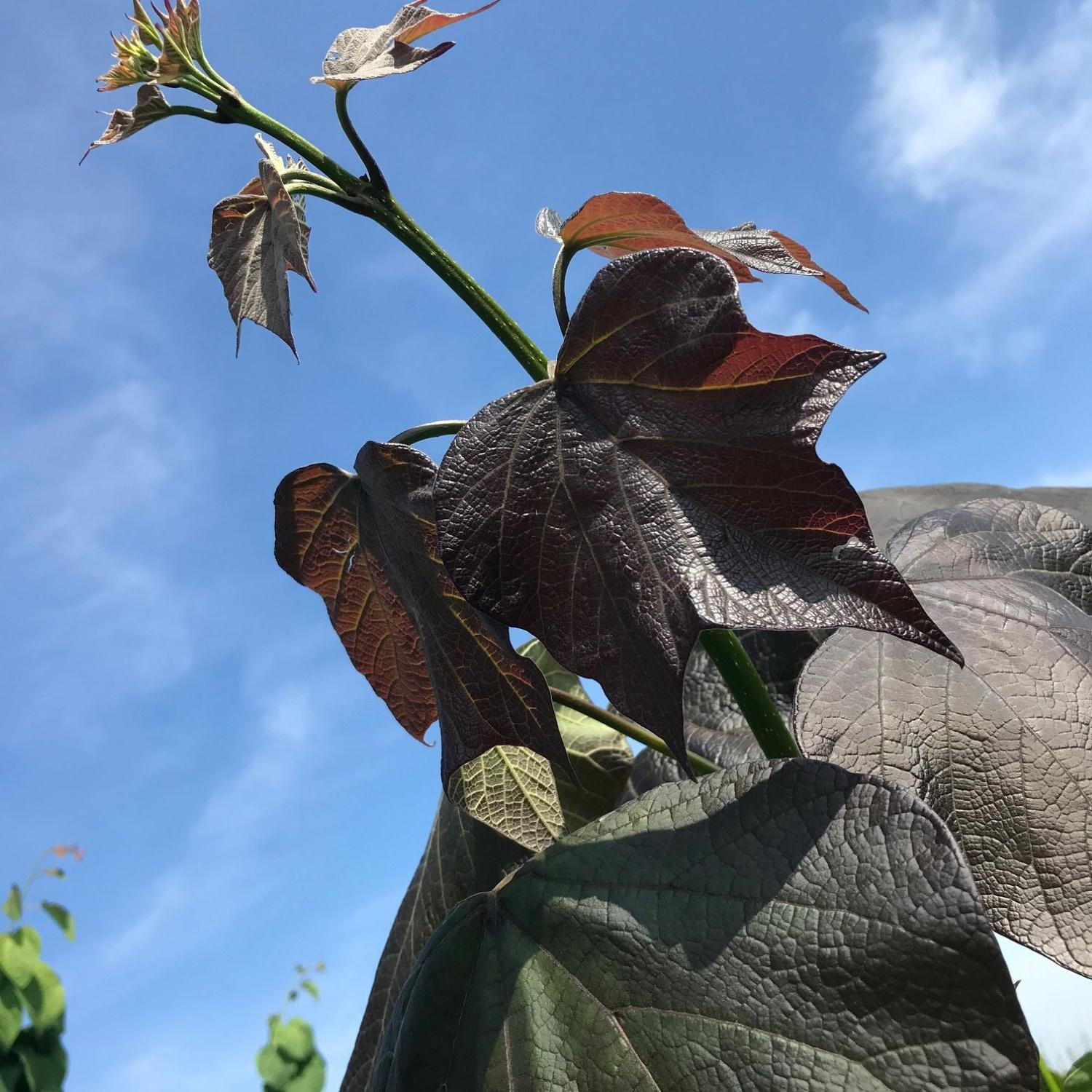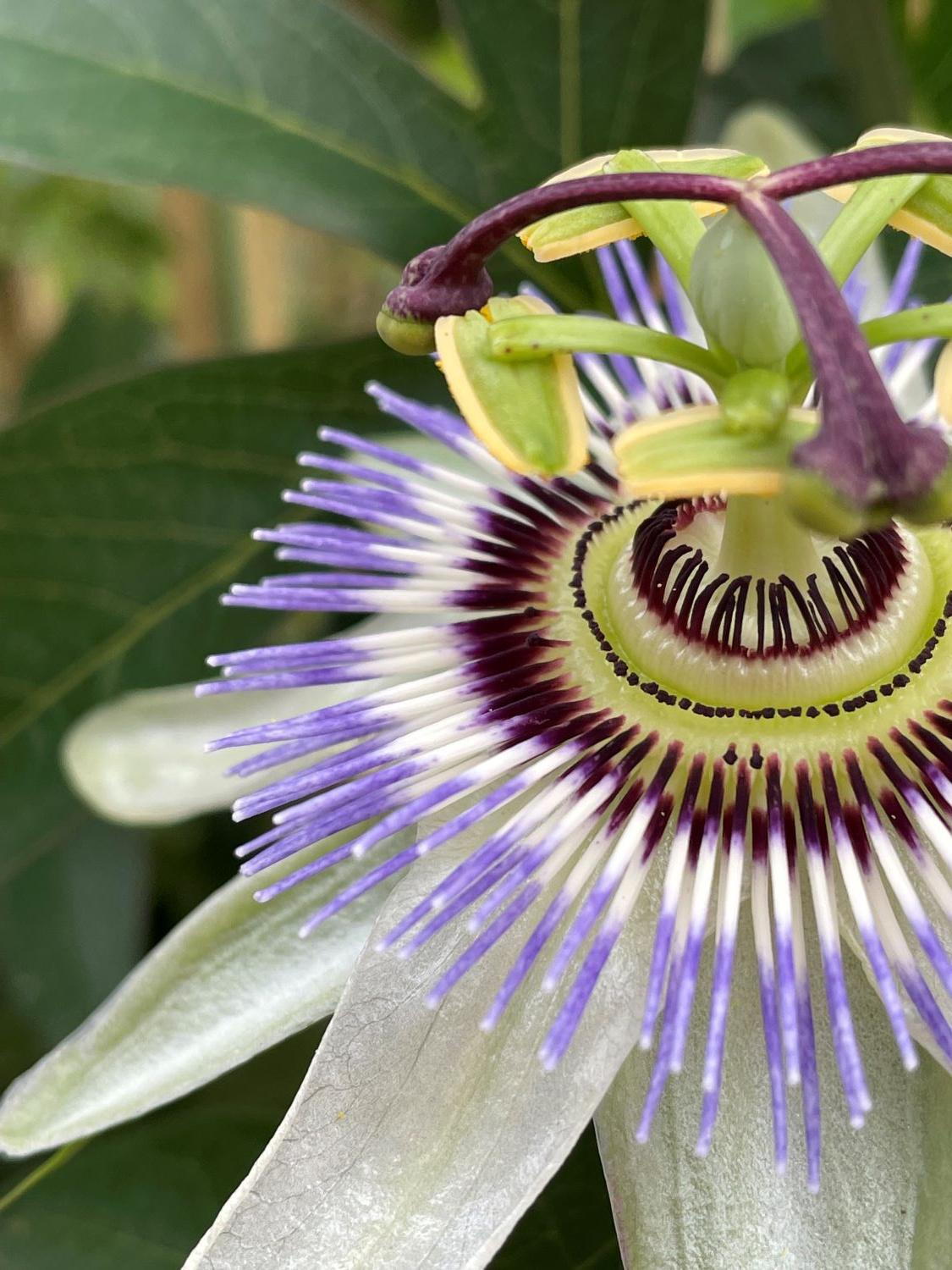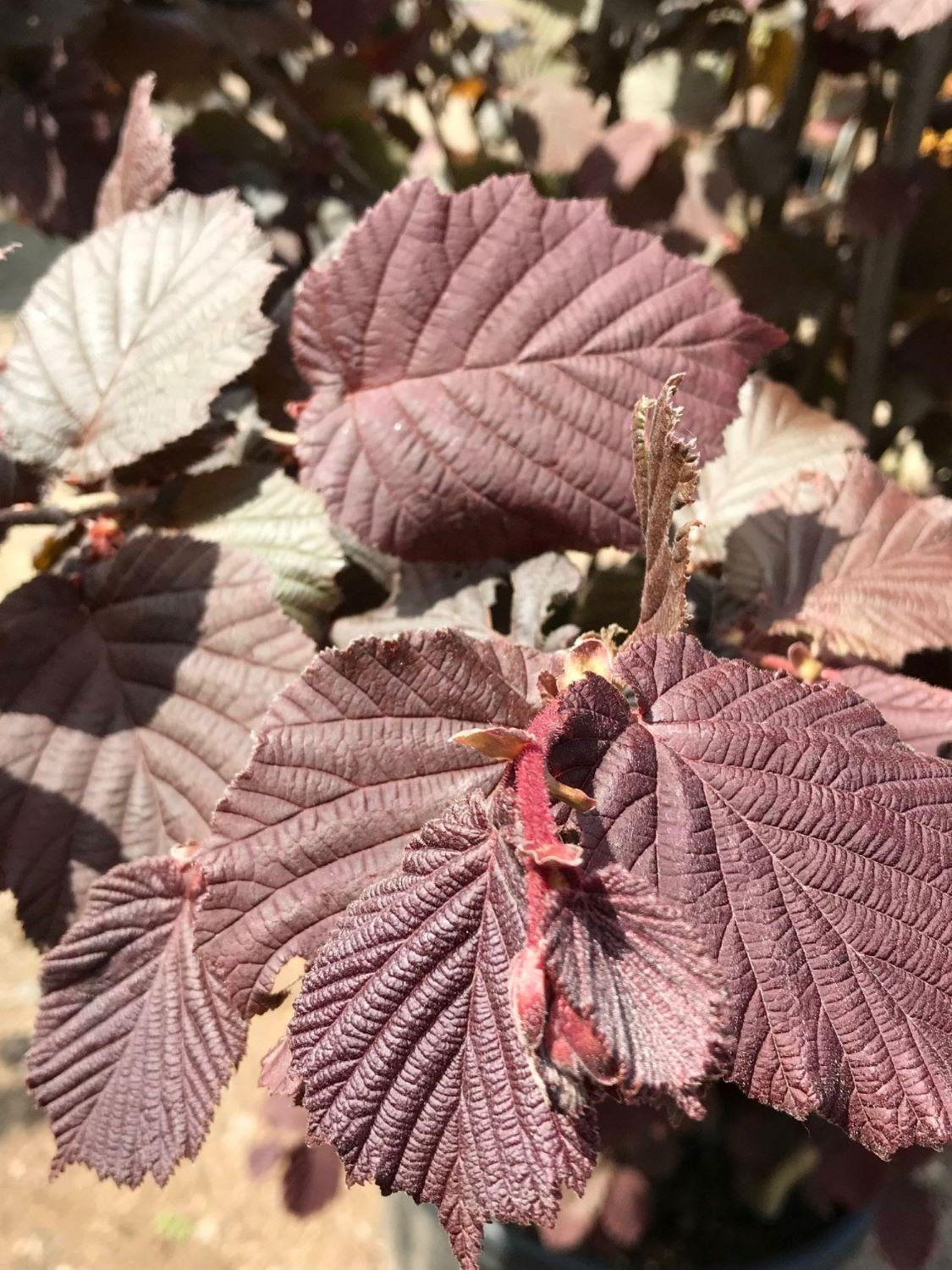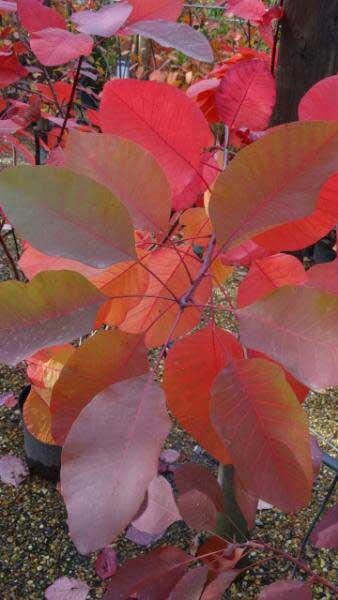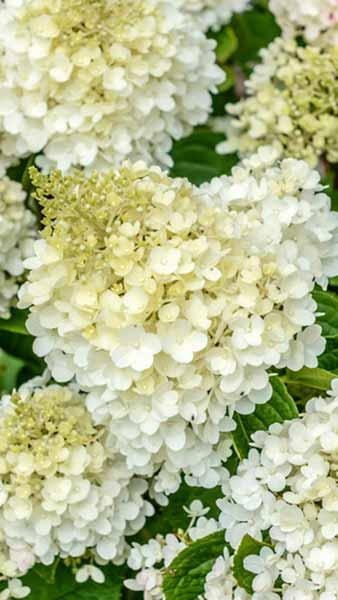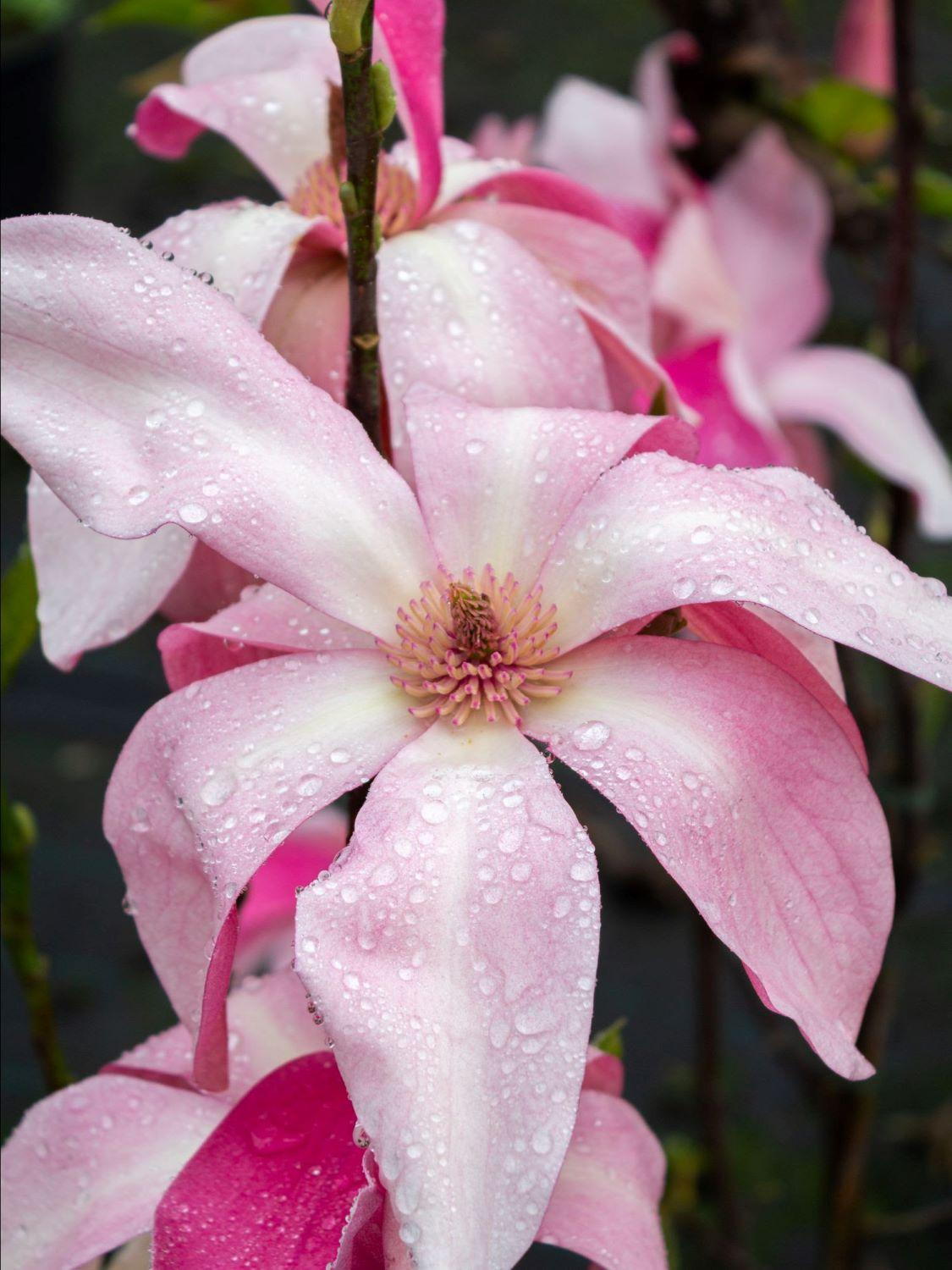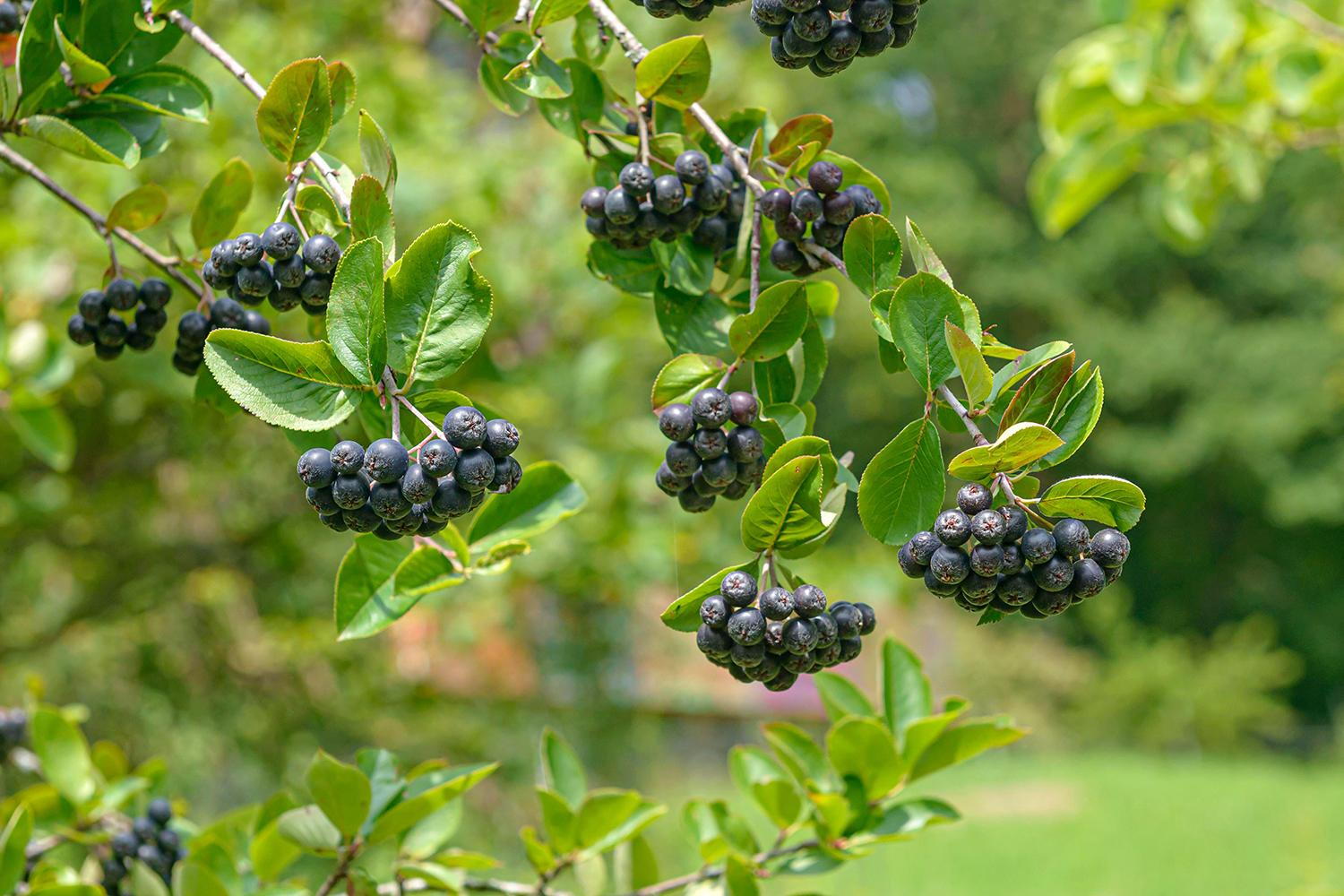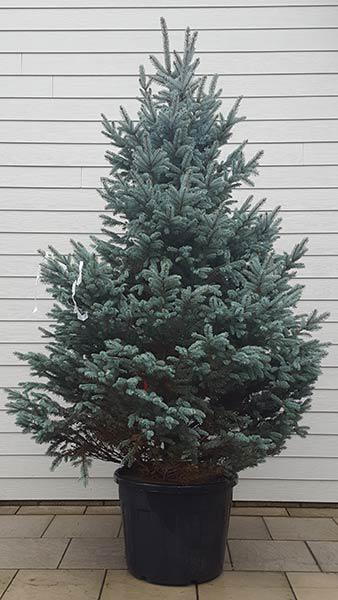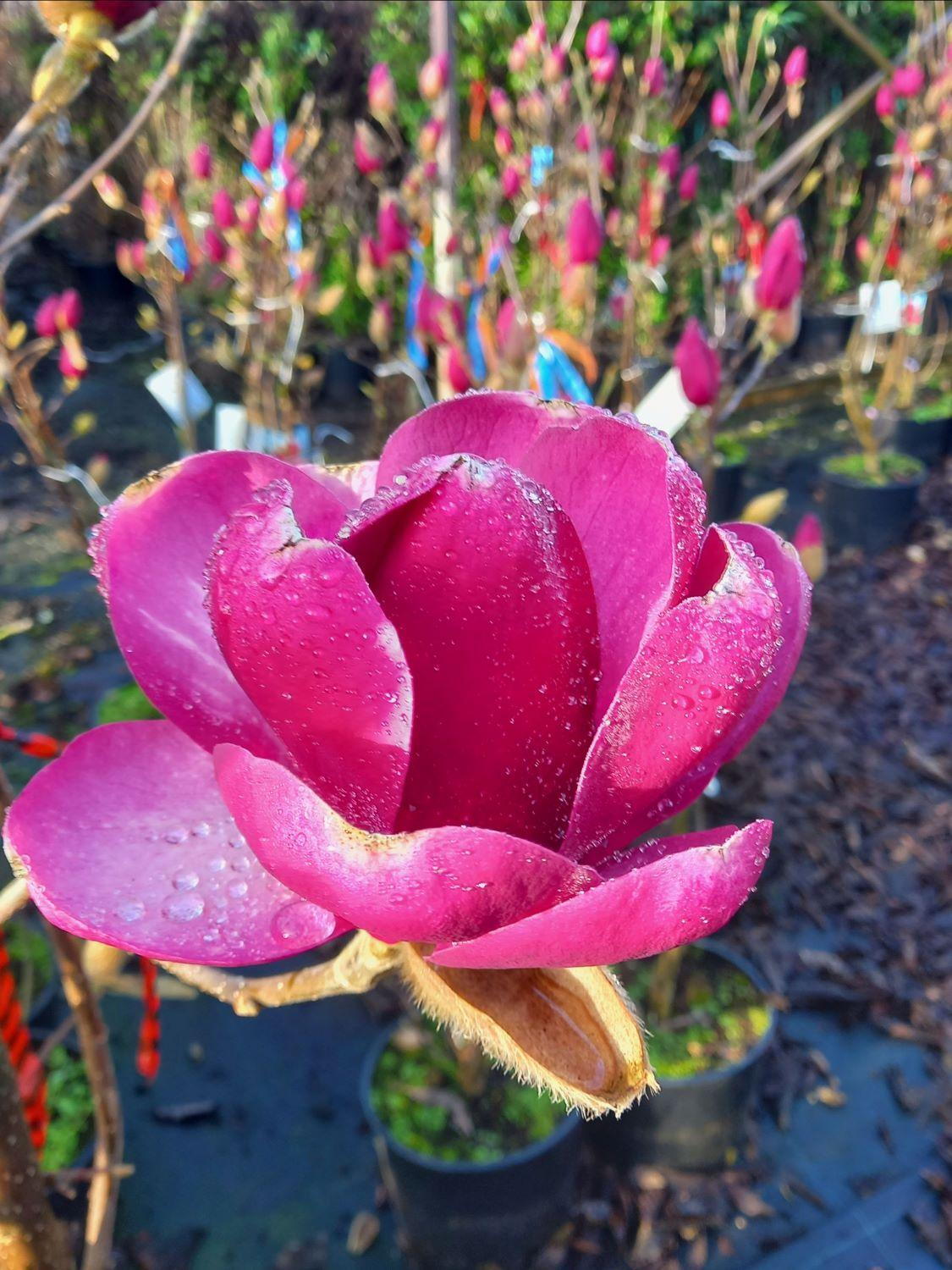Picea Pungens Fat Albert. Colorado Blue Spruce Fat Albert
A natural hybrid, Picea Pungens Fat Albert, commonly known as Colorado Blue Spruce and Fat Albert Spruce, is an evergreen conifer tree with spectacular silvery-blue needles. Its distinctive pyramid shape, as well as its true blue colour, make this ornamental spruce perfect as a focus plant or as a part of an evergreen screen.The lush, matte foliage of this compact conifer provides multiple seasons of interest. The needles are icy blue, tightly spread along ascending, closely-spaced branches. Unlike other blue spruces, which are commonly grown from seedlings, Fat Albert spruces are grafted and don’t vary in size, shape or colour. The unmistakable steel blue colour of this conifer remains unchanged for years to come. The young cones emerge green, maturing to light brown shades. Native to the Rocky Mountains, Picea Pungens spruces are sturdy and resistant and this specific variety is no exception. Discovered in Oregon, by Iseli Nursery, Fat Albert Spruce can easily survive in a wide range of climates, including the UK climate. Fully hardy throughout Britain and Ireland, this evergreen shrub feels at home even in the severest European climates.Resilient and easy to care for, Fat Albert Spruce is not finicky when it comes to the growing conditions, either. It will thrive in most types of soils, but it prefers moist, fertile soil with good drainage, and full sun to light shade. Highly resistant to pests and diseases, this showy spruce’s only sensitivity is overly wet soil.Long-lived and rugged, Fat Albert Spruce is virtually maintenance-free. Its compact habit requires no pruning, but if you decide to do a little trimming to rejuvenate the plant, remove the new growth of the season only. The perfect cone shape of this spruce comes naturally and requires no staking or training to achieve its form. Generally slow-growing, with a growth rate around 30 centimetres per year, this evergreen conifer can grow to be 3 to 5 metres tall and 3 to 3 metres wide. Thankfully, you won’t have to wait too long to enjoy the extraordinary form of this plant, since our specimens are mature and already standing 2.5 to 3 metres tall.Ideal for the spotlight, Fat Albert Spruce is commonly used as a statement tree. The natural form of a pyramid and showy, year-round foliage make this conifer great choice for a patio or a front yard, where it can enjoy the attention it deserves. Suitable for mass planting, it makes a spectacular hedge, its dense and bluish-gray foliage serving as a windbreak and providing privacy throughout the whole year. The interesting colour of the foliage and the compact habit also make Fat Albert Spruce a popular choice for a Living Christmas tree.
